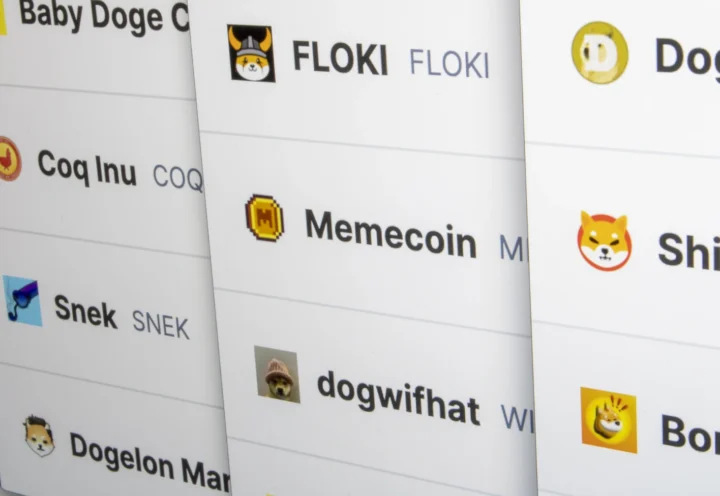How to Launch Your Own Memecoin

Creating a memecoin today is something almost anyone can do. You don’t need a team of developers, major investments, or even a deep understanding of blockchain technology. All it takes is an idea, a sense of humor, and some basic knowledge of the tools involved. In this article, we’ll walk through the steps to launch your own token — from choosing a platform to getting it ready for trading.
It’s important to note that this piece is for informational purposes only. CP Media reminds readers that memecoins are a highly speculative part of the crypto economy. For a deeper look at the risks, see our analysis “Meme Coin Phenomenon: The Other Side of the Crypto Industry.”
How Memecoins Are Built: The Technical Side
It’s important to understand that a memecoin isn’t a technical classification. It’s a conceptual or marketing label. What defines a memecoin isn’t its functionality or technological structure, but the symbolic and communicative context in which it exists.
In essence, a memecoin is a social artifact — a form of self-expression and collective play within digital culture. Its value is shaped by perception and community interaction rather than by its technical architecture.
From a technological standpoint, a memecoin can either be a crypto token created within an existing blockchain ecosystem, such as Ethereum, or a native token of a separate blockchain network that builds its own ecosystem — Dogecoin being a prime example.
It’s worth noting that more than 99.99% of all memecoins are launched within existing blockchain ecosystems. The largest among them are:
- Solana
- Ethereum
- BNB Chain
- TRON
The exact number of memecoins is impossible to determine, since many exist only within specific platforms where they’re created in massive quantities. For instance, during the hype surrounding the Pump.fun platform, more than 10,000 new tokens were launched there daily. Platforms like this allow virtually anyone to create their own memecoin through a simple user interface, without any advanced technical knowledge.
The Most Popular Platforms for Creating Memecoins
It’s worth noting that platforms for creating custom tokens have been around for quite some time. For instance, Token Generator has been operating since 2018, allowing users to create ERC-20 tokens on the Ethereum blockchain without any programming skills. These platforms offer advanced customization options for newly issued cryptocurrencies, but they can also be used to launch memecoins. After issuance, users need to create a liquidity pool on a decentralized exchange (DEX) through the platform’s interface, making the potential memecoin available to the market.
The landscape changed dramatically in January 2024 with the launch of Pump.fun on the Solana network. It became the first successful platform for instant memecoin creation and trading. The key mechanism behind such platforms is the use of a bonding curve.
A bonding curve is a mathematical model that describes how an asset’s price changes based on its supply. It’s used for automatic price formation in decentralized trading systems that operate without market makers.
In September 2024, the Solana blockchain surpassed Ethereum for the first time in total transaction fees, driven by Pump.fun’s user activity. The hype surrounding the project led to the emergence of many similar platforms across other blockchain ecosystems, including:
- Sun Pump in the TRON ecosystem
- PinkSale, an EVM-compatible multichain protocol
- Four.Meme in the BNB Chain ecosystem
- and many others
According to DefiLlama, as of early November 2025, there are 134 active token-launching platforms, the vast majority of which focus on memecoins and also provide trading functionality. However, only about 30 of these projects show consistent activity. Pump.fun remains the market leader in terms of community engagement.
How to Launch Your Own Memecoin: A Step-by-Step Explainer
Creating a memecoin without writing a single line of code takes just a few minutes. The process itself can be broken down into several simple steps:
- Connect your wallet. Choose a wallet supported by the platform and connect it.
- Create your token through the web interface. Fill out a short form that usually includes the token’s name and ticker, a brief project description, an image, and links to your website and social media.
- Confirm and launch. Once the information is confirmed, the tokens are issued automatically, and trading begins right away. From that moment, anyone can buy your token directly on the platform without switching to other exchanges.
Token pricing, total supply, and basic tokenomics parameters are set automatically. The creator controls only the informational aspects of the memecoin, while the technical side is fully handled by the issuing platform according to predefined rules encoded in the smart contract.
Initially, trading is available only on the issuing platform. When trading volume reaches a certain threshold, or when the asset’s market cap exceeds, for example, $50,000, the token is automatically listed on other exchanges — a process known as “graduation.” It’s usually listed on major DEXs such as PumpSwap, Uniswap, or Raydium, with a liquidity pool created at the same time. From that point, the asset enters the broader crypto market.
Cryptocurrency launchpads also offer built-in promotional tools, helping newly launched memecoins get noticed by traders early on. Still, a token’s success ultimately depends on the creator’s creativity and understanding of how to promote such projects. Today, the actual issuance of tokens is the easiest part — the real challenge begins with building visibility and traction in the market.
Legal Aspects and Risks of Launching Memecoins
It’s important to remember that the legal framework surrounding digital assets is still evolving and varies widely across different jurisdictions. The creation and distribution of cryptocurrency tokens, including memecoins, may fall under securities regulations, financial licensing laws, anti–money laundering (AML) rules, and know-your-customer (KYC) compliance requirements.
Failure to meet these standards can result in administrative or even criminal liability, as well as asset freezes and restricted access to trading platforms.
Taxation is another crucial factor. In most jurisdictions, cryptocurrency transactions are considered taxable events — whether it’s income from token sales, trading activity, or capital gains from price appreciation. Inaccurate accounting or failure to properly report such transactions may lead to financial penalties or fines imposed by tax authorities.
Before launching or promoting a token, it’s strongly recommended to conduct a comprehensive legal and tax review of the project and, if necessary, consult with professionals specializing in crypto regulation and taxation. Doing so helps minimize risks and ensures compliance with applicable laws.











